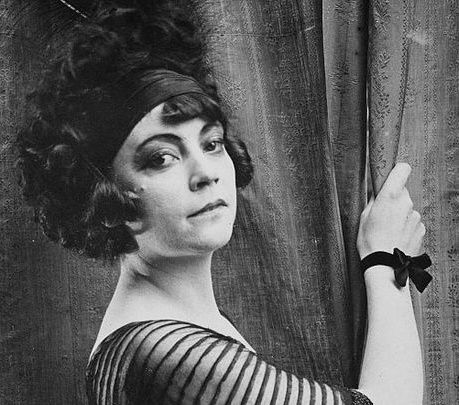When it comes to celluloid divas from Scandinavia you would be forgiven for thinking of Greta Garbo first. But even Garbo herself acknowledged that the woman who ‘taught her everything she knew’ was the Danish silent film icon Asta Nielsen.
In an era of silent cinema when language barriers did not exist, making it possible for national stars to become international successes, Asta Nielsen rose to fame as the star of Danish and German-produced films.
Nielsen was in charge of her own image and career, uncommon in those days, and even started her own production company in 1921. Yet until recently, the Asta Nielsen phenomenon has remained largely forgotten – especially among English and American audiences.
And it’s a shame – apart from the impressive body of work (including some 74 films shot between 1910 and 1932), Nielsen’s life reads like a charged melodrama, made-to-order for the Golden Age of cinema.
Tough beginnings
Nielsen was born into a working-class family in Copenhagen in 1881. Despite the protestations of her mother, who hoped she might land a decent job as a shop girl, she decided to enter the Royal Theatre’s drama school.
During her stint at the drama school she became pregnant. Damning the scandal, she became the unwed teenage mother of a daughter (her only child) and resolved to keep her. Beginning a stage career in 1902, she went on to make her film debut in 1910 with ‘The Abyss’.
It was mainly due to Nielsen’s singular eroticism that ‘The Abyss’ made the splash that it did. In the film, Asta plays a music teacher and ‘good girl’ who forsakes her straight-laced fiancé for a caddish circus cowboy. In the film’s erotic climax, Nielsen lassos her lover and performs an undulating dance with him – a decidedly creative motif for lovemaking.
European audiences and critics alike were taken aback by Nielsen’s forcefully suggestive appeal. Asta has a dark quality, with heavy make-up, and a stare that seemed to hypnotise audiences and co-stars alike, quite unlike the celluloid heroines of the time. Her build was long and boyish in contrast to the buxom figures of her contemporaries. Audiences were used to seeing film actresses with exaggerated gestures and facial expressions. Nielsen’s style was refreshingly natural.
Greatness in Germany
After a few more Danish productions, Nielsen relocated to Germany with her husband, Svend Gade, where her star continued its meteoric rise. Cinemas were named after her, as was a popular ‘Asta Nielsen Waltz’ of the time.
Her typical hairstyle, twisted into two chignons over each ear, was widely imitated by young girls throughout Europe, especially in Germany. She was the cinema’s first one-name diva, just ‘Asta’ or ‘Die Asta’ in the German press, because there was only one Asta in the world.
Never limited to the role of the femme fatale, Nielsen played flappers, proletarians, Inuits, gypsies, young males and children (in her mid-30s she played a 12-year-old) with equal zest. After founding her own production company in 1921, Nielsen chose Hamlet as her first project, daringly casting herself as a gender-bending Prince of Denmark.
Garbo got in the way
Interestingly, Nielsen failed to repeat her success in the US, despite her huge following in Europe. Her signature eroticism pervaded her films so thoroughly that US censors seemed to have no idea when to stop cutting. ‘The Abyss’ was prepared for US theatrical release two years after its production in 1912 under the limp title ‘The Woman Always Pays’.
Likewise, another opportunity for a US breakthrough floundered in 1925, in GW Pabst’s ‘The Joyless Street’. In the original release, Nielsen shared equal billing with the young Greta Garbo. The film was subsequently re-edited to show off the up-and-coming Garbo, and Nielsen became a casualty of the cutting room floor.
The dawn of the ‘talkies’ seemed to leave Nielsen’s film career in the dust (unlike Greta Garbo, whose voice became immortalised in films with sound). She became a collage artist and occasional journalist over the ensuing decades, though she was almost penniless in her later years and was devastated by her daughter’s suicide. She died in 1972 at the age of 90.
Luckily, however, some 38 of her films survive – including a restored ‘Joyless Street’ with her original starring role intact.













